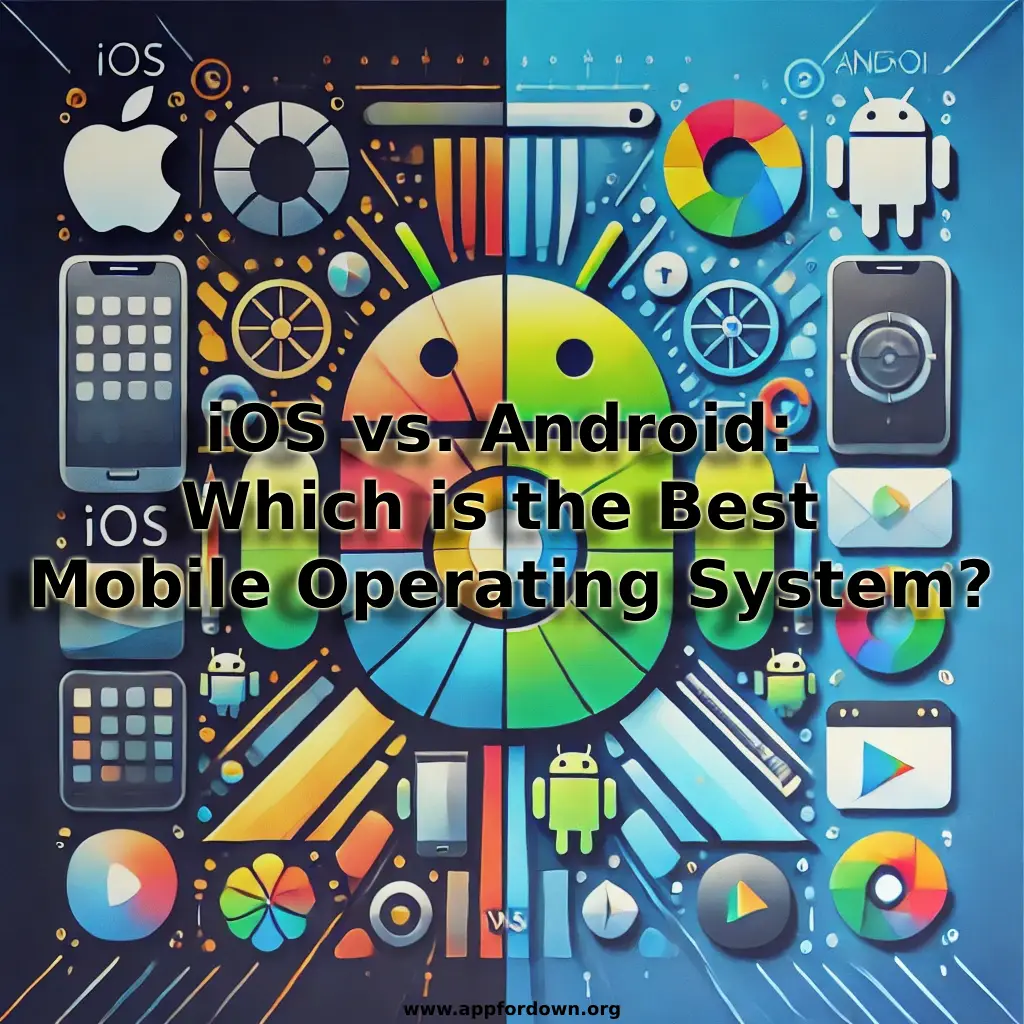The battle between iOS and Android has been a topic of debate for years, with both operating systems offering unique features, strengths, and weaknesses. Whether you’re an Apple enthusiast or an Android fan, understanding the differences between these two giants can help you make an informed decision when choosing your next smartphone. In this blog post, we will dive into the critical aspects of iOS and Android, comparing them to see which best fits you.

Introduction to iOS and Android
What is iOS?
iOS is the mobile operating system developed by Apple Inc. It powers all of Apple’s mobile devices, including the iPhone, iPad, and iPod Touch. Since its launch in 2007, iOS has been known for its sleek design, user-friendly interface, and seamless integration with other Apple products. It’s a closed-source operating system. Apple maintains strict control over the hardware and software, ensuring a uniform experience across all its devices.
What is Android?
On the other hand, Android is a mobile operating system developed by Google based on the Linux kernel. Launched in 2008, Android is open-source, allowing various manufacturers to customize it to suit their devices. This flexibility has made Android the world’s most popular mobile operating system, powering millions of smartphones and tablets from various brands, including Samsung, Huawei, and Google Pixel.
User Interface and Experience
iOS: A Seamless and Intuitive Experience
iOS is often praised for its clean and intuitive user interface. Apple’s design philosophy centers on simplicity, focusing on making the user experience as smooth as possible. The operating system’s layout is consistent across all Apple devices, with a uniform look and feel that many users find appealing. The home screen is straightforward, with apps arranged in a grid. Apple’s emphasis on design is evident in every aspect of the OS, from the typography to the animations.
Android: Customization at Its Best
Android offers a different approach with a more customizable user interface. Users can choose from various home screen layouts, widgets, and themes, allowing for a more personalized experience. Android’s flexibility extends to its app launcher, notification center, and navigation buttons. While this level of customization can be overwhelming for some, it’s a boon for users who like to tailor their devices to their specific needs and preferences.
App Store and App Availability
iOS: Quality Over Quantity
The Apple App Store is known for its stringent app review process, which ensures that only high-quality apps make it onto the platform. This focus on quality has resulted in a more curated selection of apps, with fewer instances of malware or poorly designed software. Additionally, many developers prioritize iOS when launching new apps, meaning iPhone users often get access to the latest and greatest apps before Android users.
Android: A World of Options
Google Play Store, Android’s primary app marketplace, offers a vast selection of apps with fewer restrictions on what can be published. While this means a broader variety of apps is available, it also increases the chances of encountering low-quality or malicious software. However, Android users benefit from alternative app stores and the ability to sideload apps, providing even more options for software and customization.
Security and Privacy
iOS: A Fortress of Security
Security has always been one of Apple’s top priorities, and iOS is no exception. Apple’s closed ecosystem and strict app review process make iOS devices less susceptible to malware and security breaches. Features like Face ID, Touch ID, and encrypted messaging in iMessage contribute to iOS’s reputation as a secure platform. Apple also takes privacy seriously, with robust privacy settings and a commitment to minimizing data collection.
Android: Security with Flexibility
Android’s open nature means it’s more vulnerable to security threats, especially if users install apps from unknown sources. However, Google has significantly improved Android’s security over the years. Google Play Protect, regular security updates, and features like fingerprint authentication and encrypted messaging have helped make Android a more secure platform. Users who prioritize flexibility may appreciate Android’s approach, but it’s essential to be vigilant about security.
Hardware and Device Variety
iOS: A Premium Experience
Since iOS is exclusively available on Apple devices, users are limited to iPhones, iPads, and iPods. However, this limitation comes with benefits. Apple’s control over the hardware and software ensures a seamless experience, with devices optimized to work perfectly with the operating system. The downside is that Apple products tend to be more expensive, with fewer options for budget-conscious consumers.
Android: Something for Everyone
Android’s open-source nature allows for various devices across various price points. Whether you’re looking for a high-end flagship phone, a budget-friendly option, or something in between, an Android device suits your needs. This diversity means that Android users can find a phone that fits their design, features, and price preferences. Still, it also means that the quality of the user experience can vary significantly between devices.
Software Updates
iOS: Timely and Consistent
One of the advantages of iOS is that software updates are rolled out consistently and simultaneously to all compatible devices. When Apple releases a new version of iOS, users can be confident that they will receive the update on the same day, regardless of their carrier or location. This consistency helps ensure that all iOS users can access the latest features and security patches.
Android: Fragmentation Challenges
Android updates could be more straightforward. Since various manufacturers use Android, the rollout of updates can be fragmented. While Google’s Pixel devices receive updates directly from Google, other manufacturers often delay updates to accommodate their custom skins and features. This fragmentation can leave some Android users waiting months or even years for the latest updates, potentially missing out on new features and security improvements.
Which is Better for You?
iOS: The Choice for Simplicity and Security
Value a seamless, user-friendly experience with a strong emphasis on security and privacy. IOS might be the better choice for you. Apple’s While limited in device variety, Apple’s ecosystem offers a premium experience with consistent updates and a curated selection of high-quality apps. However, be prepared to pay a premium for Apple’s hardware.
Android: The Choice for Flexibility and Variety
On the other hand, Android could be the way to go if you prefer customization, a wide range of device options, and the freedom to install apps from various sources. Android’s flexibility and variety make it an appealing choice for tech enthusiasts and budget-conscious consumers. Just be aware that this flexibility comes with trade-offs in security and software update consistency.

Conclusion
In the end, the decision between iOS and Android comes down to personal preference and priorities. Both operating systems have strengths and weaknesses; what works best for one person may be better for another. By understanding the key differences between iOS and Android, you can choose the mobile operating system that best suits your needs and enhances your digital life.
Whether you’re team iOS or team Android, finding a device that works for you and makes your life easier is the most important thing. Happy smartphone shopping!







